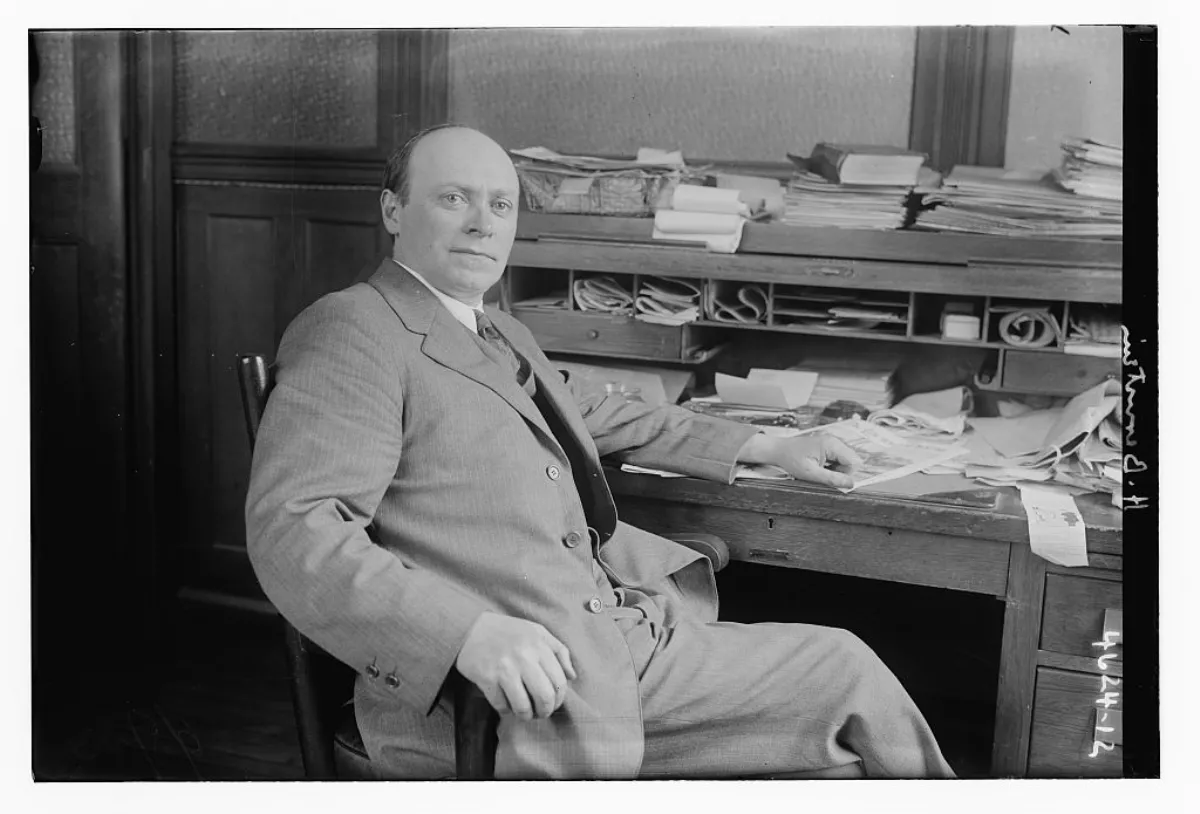 1.
1. Herman Bernstein was an American journalist, poet, novelist, playwright, translator, Jewish activist, and diplomat.

 1.
1. Herman Bernstein was an American journalist, poet, novelist, playwright, translator, Jewish activist, and diplomat.
Herman Bernstein was the United States Ambassador to Albania and was the founder of Der Tog, the Jewish daily newspaper.
Herman Bernstein was born in Vladislavov, Russian Empire.
Herman Bernstein's brother was a writer, Hillel, or Harry Bernstein.
Herman Bernstein had two older sisters named Helen and Flora.
Herman Bernstein covered the Russian Revolution in 1917 for the New York Herald, which led him to both Siberia and Japan with the American Expeditionary Forces.
Herman Bernstein covered the Paris Peace Conference in 1919 for the same newspaper.
Herman Bernstein died in Sheffield, Massachusetts, on August 31,1935.
Herman Bernstein was survived by his wife Sophie, and his brother the writer Hillel Bernstein.
Herman Bernstein was prolific as a journalist throughout his life, with his first stories published in 1900.
Herman Bernstein contributed, among others, to the New York Evening Post, The Nation, The Independent, and Ainslee's Magazine.
Herman Bernstein was the founder and editor of The Day and an editor of The Jewish Tribune and of the Jewish Daily Bulletin.
Herman Bernstein later translated Beilis's Story of My Sufferings.
In 1918, Herman Bernstein revealed a secret correspondence between Tsar Nicholas II and Kaiser Wilhelm II and published it in a book, The Willy-Nicky Correspondence, published by Knopf with a foreword by Theodore Roosevelt.
In 1915, Herman Bernstein published a book, La Rekta Gibulo, in the so-called universal language Esperanto.
Herman Bernstein translated a number of important literary works, by figures such as Maxim Gorky, Leonid Andreyev, Leo Tolstoy, and Ivan Turgenev, from Russian to English.
Herman Bernstein's own plays The Mandarin and The Right to Kill, were presented on Broadway.
Herman Bernstein met Herbert Hoover at the Paris Peace Conference and supported his bid for the presidency in 1928.
Soon thereafter, Herman Bernstein published Herbert Hoover: The Man Who Brought America to The World.
In 1921, responding to Henry Ford's printing of 500,000 copies of the notorious anti-Semitic forgery The Protocols of the Elders of Zion as well as a series of anti-Semitic articles under the title The International Jew in Ford's newspaper The Dearborn Independent, Herman Bernstein published the book History of a Lie, a demonstration of The Protocols' spurious origins.
Herman Bernstein published another and more elaborate refutation, The Truth About the 'Protocols of Zion' - A Complete Exposure.
Herman Bernstein's correspondence, housed at the YIVO Institute for Jewish Research at the Center for Jewish History in New York, includes letters to and from many of the most eminent people of that period in various walks of life, including Mark Twain, Sholem Aleichem, Andrew Carnegie, Leo Tolstoy, William Howard Taft, George Bernard Shaw, Max Nordau, Louis Brandeis, John D Rockefeller, Louis Marshall, Israel Zangwill, Henri Bergson, Arthur Brisbane, Mordecai Kaplan, Henry Morgenthau, Sr.
Herman Bernstein worked with organizations such as ORT, the Central Relief Committee, the American Jewish Relief Committee, and the American Jewish Joint Distribution Committee to improve conditions for Jews in Europe.
Herman Bernstein served as secretary of the American Jewish Committee, and as an officer of the Zionist Organization of America.
Herman Bernstein advocated the creation of a Jewish state in Palestine and wrote about the politics of the Middle East and the settlement of Palestine.